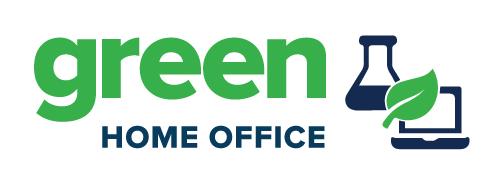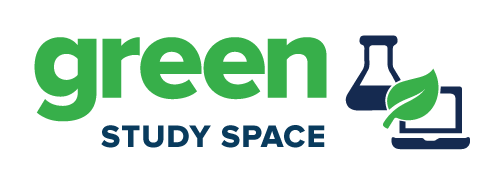Green Workplace is here to help the UC Davis community reduce their impact on the environment!
Green Home Office & Study Space
The Green Workplace Program is a self assessment program for UC Davis office and laboratories. The program shows you achievable steps toward a more sustainable workspace and celebrates your accomplishments. There are a wide variety of actions relevant to labs and offices that are designed to reduce water, and energy usage, cut carbon emissions, and encourage sustainable purchasing. Thank you for showing interest in greening your workplace!
By participating, you can:
- Save resources and money; some vendor discounts may be available!
- Improve re-use of supplies and equipment
- Reduce greenhouse gas emissions and environmental impacts on waste, water, and energy
- Be recognized for your sustainability efforts
Complete the assessment process and get certified as a Green Workplace in as little as a few weeks (actual time varies by workplace).
Email greenworkplace@ucdavis.edu to start the certification process today!
How to Participate | Create a Green Workplace
- Step 1: Get approval and learn more during kickoff
- - Get the approval to participate from your department head, MSO or supervisor (our office can assist with more information if needed).
- Establish at least one Green Captain to lead your Green Team.
- Schedule a kickoff presentation from our office with your workplace colleagues to learn about the program—the more the merrier! - Step 2: Complete the baseline assessment
- Contact greenworkplace@ucdavis.edu to request your Baseline Assessment. This will be sent to you in a Qualtrics survey format.
- Complete the Baseline Assessment. The Green Workplace team is here to answer any questions.
- Once your baseline assessment is completed, Green Workplace will give you an initial score based on your current actions and a checklist for additional actions. Completing your assessment can take as little as a few weeks to complete, although actual times will vary depending on the amount of actions a workplace takes.
- Step 3: Set and work towards your goals
- - Define your “green vision.” What aspects of sustainability and resource conservation fit best with your workplace values? What are your goals for the certification?
- Review your baseline score and checklist to see what actions you want to take to meet those goals, and create a plan for achieving this. The Green Workplace staff is here to provide guidance and resources as you work on this.
- Bonus points will be granted for innovative and exemplary performance, so be creative! - Step 4: Certify and celebrate
- - Submit your updated actions from the checklist along with your verification document of select actions. After Green Workplace reviews these items, you will receive your final certification score. Platinum, Gold, Silver, or Bronze certification is granted based on points.
Platinum. Scores 90% or higher
Gold. Scores 80%-89%
Silver. Scores 60%-79%
Bronze. Scores 50%-59%
- Your workplace will receive a framed certificate at the annual Sustainability Summit, and a Green Workplace certification graphic for use in all employee email signatures. You may also be eligible for special discounts from lab vendors (while offers last).
- Certification is good for three years.
Certified Green
These UC Davis workplaces are certified green!
- Platinum
- Center for Chicanx and Latinx Academic Student Success (El Centro) (Certified since 2025, Green Captain: Roxanne Flores and Wilian Ramirez)
- Gold
- Gaudin Lab - Department of Plant Sciences (Certified since 2024, Green Captain: Amelie Gaudin)
- Campus Veterinary Services (Recertified since 2024, Green Captain: Morgan Bare)
- One Health Institute (Certified since 2024, Green Captain Sam Christie)
- Tahoe Environmental Resources Center (Certified since 2020, Green Captain: Anne Liston)
- Silver
- Slupsky Lab (Certified since 2020, Green Captain: Darya Mishchuk)
- Office of the Registrar (Certified since 2021, Green Captain: Colin Goulding)
Green Home Office / Study Space


Work from home or have a study space you want to certify as green? Being green at home while working and studying has great benefits, similar to those listed above. Save resources and money, reuse and reduce waste, and decrease greenhouse gas emissions and other environmental impacts.
To participate, simply complete the four online modules below:
Then email greenworkplace@ucdavis.edu to complete your Green Home Office/Study Space Certification.
Additional Resources For Labs
- Fume Hood Ventilation Stickers. Intuitive fume hood signage that reinforces safe, energy-conserving behavior. Order from the Reprographics store (default price shown is for 50 stickers). Download instructions for use (PDF).
- Ultra Low-Temperature Freezers Buying and User Guide
- International Laboratory Freezer Challenge. A friendly competition to save energy that also helps participants increase sample access and security, develop sample management skills, and maintain freezers to safeguard research samples.
- Glove recycling: Please contact your local rep from Polycarbin, Kimberly-Clark, or Medline for pricing and any glove recycling program requirements.
Learn how other organizations and universities are promoting sustainability in their labs:
- My Green Lab
- My Green Lab - A California-based non-profit organization dedicated to improving the sustainability of lab environments.
- Labconscious
- Labconscious - An open resource for the life science community to reduce laboratory waste, use green chemistry, conserve water, and save energy
- American Chemical Society (ACS) Green Chemistry Institute
- American Chemical Society (ACS) Green Chemistry Institute – Convenes the global chemistry community to promote the core values and benefits of green and sustainable chemistry and engineering.
- International Institute for Sustainable Laboratories
- International Institute for Sustainable Laboratories – Devoted to the principles of sustainable laboratories and related high-technology facilities, from design to engineering to operation.
- Beyond Benign Green Chemistry Education
- Beyond Benign Green Chemistry Education - Provides educators with the tools, training, and support to make green chemistry an integral part of chemistry education.

